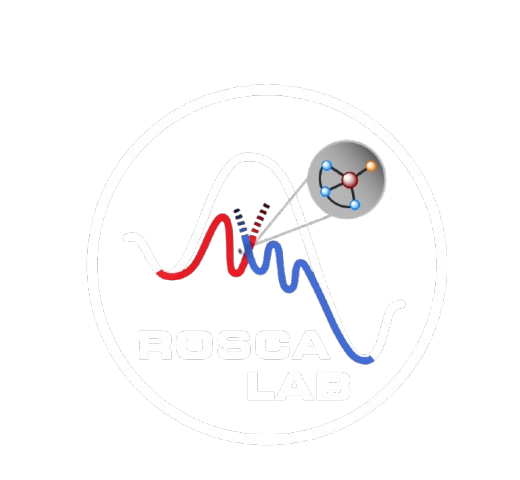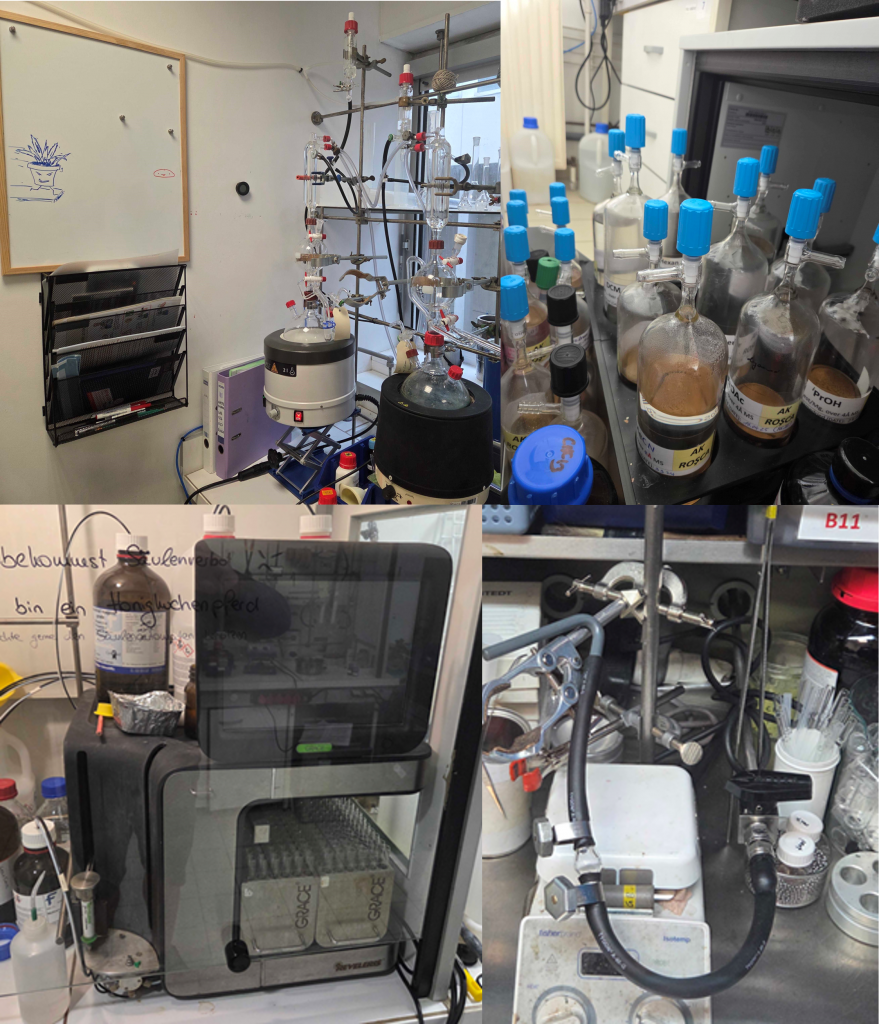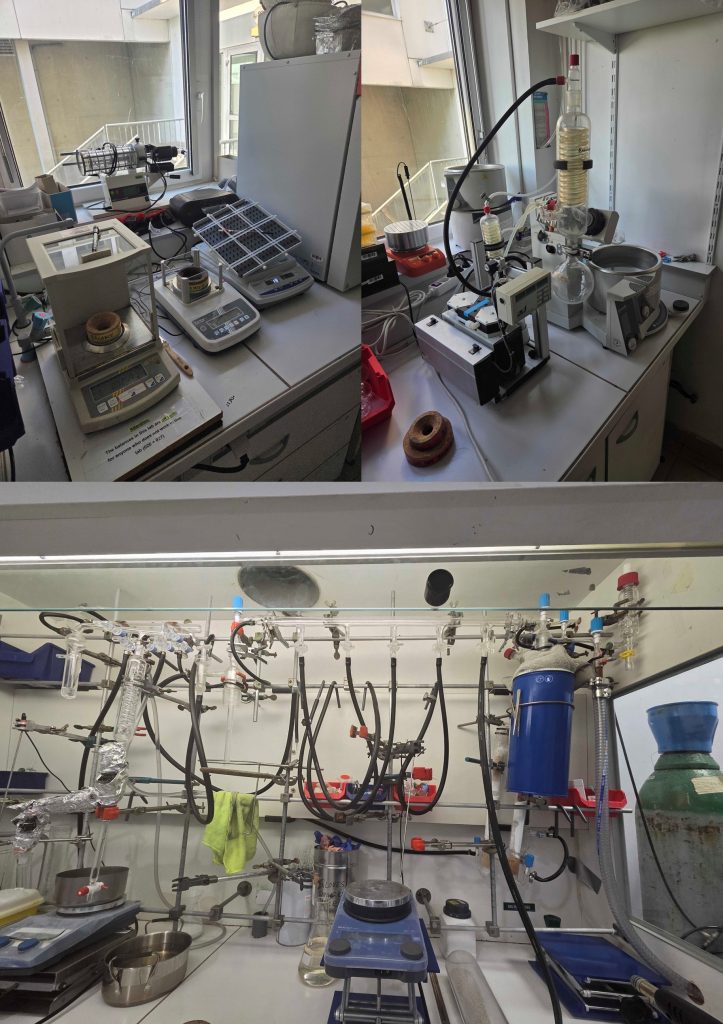
research

Infrastructure
Both labs (in Rennes and in Heidelberg) are equipped with the standard infrastructure for conducting air sensitive chemistry. Each fumehood is equipped with a Schlenk line, operating under high vacuum which is ensured by periodically serviced vacuum pumps. Vacuum levels are monitored by manometers.
We rely on Solvent Purification Systems (SPS) and on distillation apparatuses (Stills) for drying commonly used solvents which we store over molecular sieves in ampoules. In extreme cases, solvents are stored directly over sodium or potassium mirrors. Water content is routinely monitored using Karl-Fischer Titrations.
Both labs have easy access to two gloveboxes – one operating under argon and one operating under nitrogen. This is necessary since some of our compounds readily react with N₂ or show different reactivity patterns depending on the “inert” gas. The gloveboxes are fitted with vacuum inlets which allows solvent evaporation directly in the glovebox.
In some cases, reaction under gas pressure is necessary (e.g. hydrogenations, coordination of N₂, ethylene, etc.) where we rely either on autoclaves or on pressure NMR tubes, where we employ pressures up to 15 bar. For photochemical irradiation, we make use of photoreactors, using lamps varying of varying energy (370 nm – 435 nm) and intensity.
We often make use of cyclic voltammetry measurements, which are typically performed directly inside the glovebox using custom-made electrochemical cells.
To streamline purification of stubborn mixtures, or compounds who have a shorter lifetime on columns, we use automatic column purifiers. Alternatively, if temperature stability and volatility allows it, Kugelrohr distillation is often performed.
Additionally, we have access to typical instrumentation for physical-chemical analysis commonly employed by synthetic chemists: GC, GC-MS, IR, in-situ IR, NMR, EPR, single crystal X-ray diffraction.
Most of the computational chemistry studies are done in our research group, where students have the opportunity to learn how to do computational modelling, calculate reaction energy pathways or calculate NMR, IR, EPR and Mössbauer spectra. At the moment, we use the computational infrastructure of the state of Baden-Württemberg (Justus 2 Cluster), of the ISCR (Rennes) and access to the French National Cluster is planned. Additionally, we have a high-performance local computer (Susanne) for running jobs which require local environment customization or for training.

Collaborations
We often collaborate with research groups who have expertise complementary to ours.
1. Collaboration with the group of Prof. Franc Meyer (Uni Göttingen) [Prof. Franc Meyer, Dr. Serhiy Demeshko, Jan Kruse]. 57Fe-Mössbauer Spectroscopy and SQUID Magnetometry.
2. Collaboration with the group of Prof. Torsten Gutmann (TU Darmstadt and Paderborn). Parahydrogen induced polarization (PHIP) of iron complexes and Fe-based PHIP catalysis.
3. Collaboration with the group of Prof. Christina Thiele (TU Darmstadt). In-situ irradiation and tandem NMR/UV-Vis spectroscopy of iron complexes.
Additionally, we are grateful for access to the NMR and X-ray infrastructure located at the chair of Prof. Lutz H. Gade (Uni Heidelberg) and NMR expertise of paramagnetic complexes of Prof. Markus Enders (Uni Heidelberg). We also rely often on the expertise of former group member Leif Hertwig (University of Bergen, Norway) for trickier cases of computational modelling.
